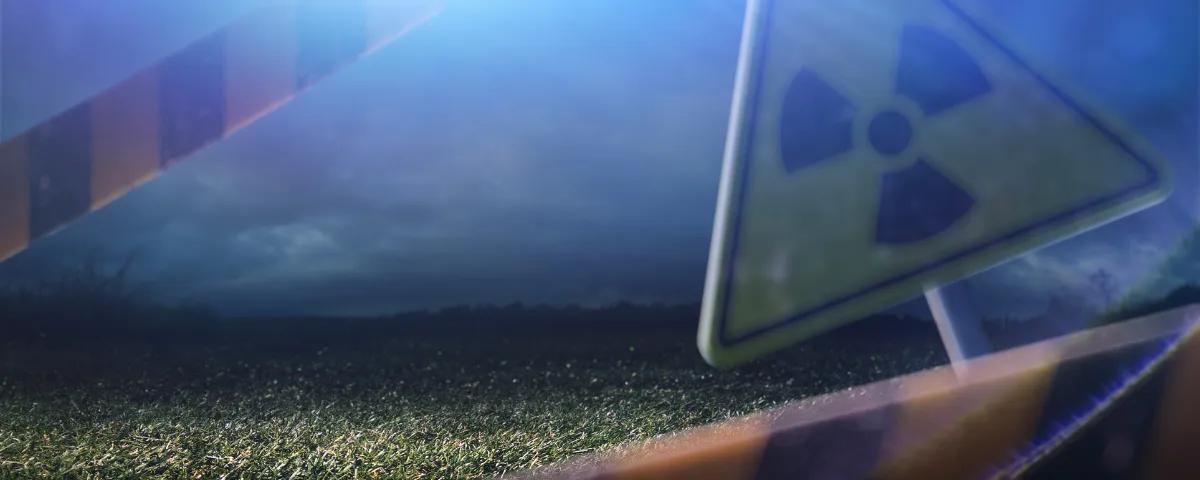Plenary Speakers

Hajah Noraishah binti Pungut
Director General
Department of Atomic Energy
Ministry of Science, Technology and Innovation
Hajah Noraishah binti Pungut first joined the Department of Atomic Energy (Atom Malaysia) in 1991 as Assistant Director. Currently, she is the Director General of Atom Malaysia. She received her Bachelor of Nuclear Science (Honours) degree from National University of Malaysia (UKM) in 1991 and her Master’s in Environmental Management from UKM in 2006. With over 31 years of experience in nuclear regulatory matters and the 3’S (Nuclear Safety, Nuclear Security and Nuclear Safeguards). Appointed as Executive Secretary of the Atomic Energy Licensing Board (AELB) in 2022. Appointed as the Chairman of the Radiation Safety Sub-Standing Committee and Standing Committee on Radiation Safety in Atom Malaysia. Member of ASEAN Network of Regulatory Bodies on Atomic Energy (ASEANTOM). Joined Malaysian Radiation Protection Association (MARPA) since 2012.
The Department of Atomic Energy (Atom Malaysia) is a competent regulatory body responsible to control and supervise the use of atomic energy in Malaysia. Atom Malaysia’s main task is to enforce the Atomic Energy Licensing Act 1984 (Act 304) and subsidiary legislations. For the past 31 years, she has been working in the various divisions such as Policy and External Affairs Division, Assessment and Licensing Division, Radiation Regulatory Division, Nuclear Installation Division as well as Technical Support Division. Work done such as assessment of the license application, review the radiological impact assessment (RIA) report, drafting regulatory document, code of practice, standards, regulations relating to the atomic energy usage in Malaysia, oversight and regulate safety, security and safeguards of nuclear research reactor, carried out inspection and enforcement activities, radiological and nuclear emergency preparedness and response. Involved in Naturally Occurring Radioactive Materials (NORM) waste management and National Nuclear Security Support and Training Center (NSSC). Previously, she was appointed as the Management Representative of the Integrated Management System of the Atom Malaysia.

Professor Mehdi Sohrabi
Professor of Health and Medical Physics
National Distinguished Professor
Faculty of Energy Engineering and Physics
Amirkabir University of Technology
Mehdi Sohrabi is Senior Professor of Health and Medical Physics at the Dept of Energy Eng & Physics at Amirkabir Univ of Tech in Tehran; national distinguished professor and Member of Iranian Academy of Sciences. He holds 4 university degrees; BSc & MSc Physics (Univ of Tehran, Iran), MSc Health Physics (Univ of Tennessee & ORNL), PhD Nucl Eng (1975), Radiological Sciences, with thesis supervised by late Prof Karl Z Morgan, father of Health Physics Ga. Institute of Tech (USA), where he received 3 USERDA projects for his PhD. In parallel, he was also Research Scientist/Principal Investigator of USERDA Projects till 1976 at Ga. Tech. He served at Health Physics Division of ORNL (USA) since 1970 as a researcher holding IAEA fellowship and cooperation till 1976.
Prof. Sohrabi has over 50 years of extensive on education and training, R&D and services on different aspects of radiation protection (RP) of workers, patients, public and environment in USA, IAEA, Iran and many other countries since 1965 (as 1st reactor health physicist). He is an IAEA International Expert holding over 100 Expert Missions to Member States and served also as Regional RP Manager of Asia and Pacific Region at IAEA in Vienna where he established or upgraded national RP infrastructures and laboratories in many Member States. He also held many positions at the Atomic Energy Organization of Iran in particular Prof & Head of Radiation Dosimetry Division (12 y) and Prof & DG of National Radiation Protection Dept (founder of Regulatory Body) of Iran where he established comprehensive national RP regulatory program.
Prof. Sohrabi is author/co-author of over 200 journal articles on novel radiation dosimetry methods, and many aspects of health physics and over 130 invited/oral conference presentations”, organized and directed over 10 international conferences and over 20 regional meetings. He is a founder of PhD program in science and technology in Iran, has supervised over 100 MSc and PhD theses, and organized and lectured as an IAEA expert/lecturer or staff for near 30 years in over 100 national/regional/international specialized events.
Prof Sohrabi’s very recent hypotheses, discoveries and inventions mostly published in Nature Scientific Report Journal include novel hypotheses on “Universal Radiation Protection System” (RPD); on “Education Standards and Standards Education in National Education Cycle”; “Breakthrough in 4π Ion Emission in Plasma Focus Device; Photoneutron spectrometry by novel multi-directional spherical neutron spectrometry system; Breakthrough whole body energy-specific and tissue-specific photoneutron dosimetry by novel miniature neutron dosimeter/spectrometers; Whole-body photoneutron 360° angular distribution dosimetry by novel “Sohrabi neutron dosimetry methods”; “Breakthrough on radon individual monitoring and protecting miners by novel dual-function monitor on respirator”; “Breakthrough electroneutron multi-response miniature dosimetry/spectrometry in medical accelerators”; Modern universal standardised trends in worker and public exposure monitoring and control in 21st century by Sohrabi URPS-based hypothesis; etc.
Prof. Sohrabi is the recipient of many national and international honours and awards, such as an “Honary Citizenship” from the Governor of State of Tennessee for MSc (1970); “Monie A. Ferst Memorial PhD Research Award” from Sigma Xi Society of America (1976); Award of Honor at 6th ICHLERA Japan (2004), and two “Distinguished Services Awards” from DG of IAEA. He also shared the 2005 Noble Peace Prize of IAEA as a Technical Officer; a “Distinguished Award” called “Noble Prize of Iran” from “Alborz Cultural Foundation of Iran” (2023); “National Research Medallion” of Iran (1997); “Distinguished Director Award” (1991); “Allameh Tabatabi National Distinguished Professor Award” of Iran (2012); two “Distinguished Professor Awards”, “Recognition Award”; “Award of Appreciation” from President of Amirkabir Univ Tech; “Certificate of Appreciation” from President of many universities in Iran; etc.
Invited Speakers
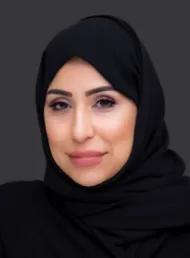
Dr. Huda Al-Sulaiti
Senior Research Director
Natural and Environmental Hazards Observatory,
Qatar Environment and Energy Research Institute (QEERI)
Dr. Huda Al-Sulaiti has a PhD. in Radiation and Nuclear Physics and an MSc. in Radiation and Environmental Protection from the University of Surrey, UK. She is the founding Senior Research Director of QEERI's Natural and Environmental Hazards Observatory, she has over 30 years of experience in environmental radioactivity and radiation protection. Her current research focuses on environmental radioactivity and techno-radiological hazards evaluation, assessment and mitigation through research, development, and innovative approaches, with the goal of strengthening government and community responses and resilience. Part of her current research interest at QEERI also focuses on establishing a comprehensive baseline and Atlas for groundwater and seawater radiological contaminants/parameters to estimate the environmental impact of industrial activities in the region and the associated health risks. For instance, detailed and comprehensive digital seawater maps at different depths were developed to establish a baseline for Cs137, Pu, tritium (H3), and Sr90, which can be enhanced due to neighbouring nuclear activities in the Gulf region. Her research also focuses on measuring enhanced Radon/Radium in groundwater and soil due to excessive use of phosphate fertilizers. In collaboration with Cyprus Institute, and her research team she also worked on developing atmospheric dispersion models (FLEXPART-WRF-CHEM) to simulate and forecast radiological dispersion of I131 and Cs 137 due to potential nuclear accidents in the region with the target to estimate the activity of dry and wet precipitation of Cs137 in the region, as well as the equivalent and effective dose of I131 due to inhalation.
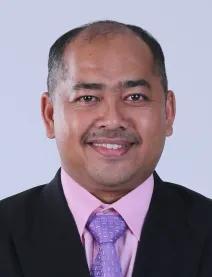
Professor Dr. Suhairul Bin Hashim
Physics Department, Faculty of Science,
Universiti Teknologi Malaysia
Suhairul Hashim obtained his B.Sc. (Hons) in Nuclear Science from Universiti Kebangsaan Malaysia in 2001, an M.Sc. in Medical Physics from the University of Surrey in 2005, and a PhD from Universiti Teknologi Malaysia (UTM) in 2009. Following his PhD, he received a Research/Postdoctoral Fellowship at the Centre for Nuclear and Radiation Physics, University of Surrey, funded by Kansas State University and UTM. He later served as a physicist at the Oncology Centre, Sultan Ismail Hospital, from July 2013 to June 2014. He is currently a Professor in the Physics Department at UTM. Suhairul has an h-index of 29, with 2725 citations across 192 documents, including 156 international journals, 3 book chapters, 1 book, and 1 encyclopedia of Medical Physics. He has reviewed over 100 international journal papers, primarily in Q1 and Q2 journals like the Journal of Alloys and Compounds and Radiation Physics and Chemistry. He served on the Editorial Board of Heliyon from May 2015 to June 2019 and was recently appointed Associate Editor for Nuclear/Medical Physics in Heliyon Physics.
He served as an Affiliate Member of the Young Scientists Network - Academy of Sciences Malaysia (YSN-ASM), which unifies efforts under ASM to address the national science and technology agenda. In 2020, he won the prestigious Top Research Scientist Malaysia award from the Academy of Sciences Malaysia, marking a distinguished academic and research career with significant contributions to nuclear science and technology, TL/OSL dosimetry, radiation dosimeters, and material science over the past 15 years. He has delivered keynote and invited speeches in Iraq, Saudi Arabia, Sunway University, UiTM, the Ministry of Health, the Malaysia Atomic Energy Licensing Board, and the Malaysia Nuclear Agency. He is a member of the Nuclear and Radiation Physics Research Group under the Resource Sustainability Research Alliance at UTM. His professional affiliations include the International Society of Radiation Physics (ISRP), Health Physics Society (HPS), Institute of Physics (IOP), IEEE Nuclear and Plasma Sciences Society, Malaysian Solid State Science and Technology Society (MASS), Institut Fizik Malaysia (Malaysian Institute of Physics), Malaysian Nuclear Society (MNS), and Malaysian Association of Medical Physics (MAMP).
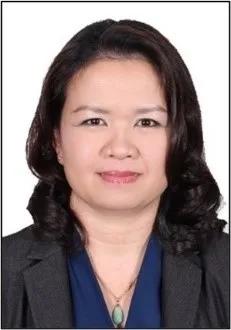
Anne Lawai Awan
Chief Operating Officer
Alypz Sdn. Bhd.
Anne is the Chief Operating Officer at Alypz Sdn. Bhd., where she spearheads company operations, shaping its vision and business strategies. After graduating from National University Malaysia in 1995 with a Bachelor of Science (Honours) in Chemistry, Anne holds several certifications, including being a Licensed Radiation Protection Consultant with the Atomic Energy Licensing Board (AELB) Malaysia and a certified Environmental Impact Assessment (EIA) Consultant (specialised in Radiological Impact Assessment, and NORM Management). With over 25 years of experience, she's been pivotal in providing radiation protection consultation and training to renowned oil and gas and mineral processing companies globally.
Anne has led numerous projects focusing on Naturally Occurring Radioactive Materials (NORM) assessment and NORM waste management across various oil and gas sites internationally, including Petronas Carigali, Total E&P, Shell, ExxonMobil, Murphy Oil, Chevron, and Kuwait Oil Company. She directed four projects for Kuwait Oil Company in the State of Kuwait, overseeing NORM waste management and radioactive material disposal. Additionally, Anne has conducted Radiological Impact Assessments, Radiation Safety Analyses and Radioactive Balance Analyses for mineral processing companies like Lynas Sdn. Bhd. and Space Metal Sdn. Bhd.
Her expertise extends to the development of NORM Management procedures, Radiation Protection Programs, radiological emergency preparedness and response, and the Integrated Management System. Anne's contributions to radiation safety and occupational health have been recognised through her presentations at international conferences and sharing sessions, emphasising the importance of managing NORM in operations. Notable presentations include discussions on Integrated Radiation Safety Management Systems, TENORM Best Practices for the Oil and Gas Industry, NORM Management in Mining and Oil and Gas Industries and Radiation Safety and Occupational Health.
Throughout her career, Anne has played a pivotal role in advancing radiation protection practices and ensuring the safety of workers and the environment in various industries.
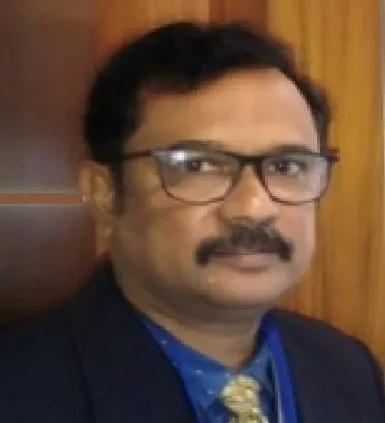
Professor Jojo Panakal John
Head of Biomedical Engineering Section,
Papua New Guinea University of Technology
Dr. Jojo is a Professor in the School of Applied Physics and Head of Biomedical Engineering Section in the Papua New Guinea University of Technology, Lae, PNG. Prior to the current assignment he has served University Malaya as a visiting faculty and Principal and Professor in the Fatima Mata National College (Autonomous), India. He has more than 30 years of university teaching and research experience. He did MPhil and PhD in Applied Nuclear Physics from the Aligarh Muslim University, India. His major research interests are radiation dosimetry and its health effects. He has authored more than 100 peer reviewed journals and 93 conference publications. He has supervised 15 PhDs, 4 MPhils and several graduate and postgraduate degrees. Dr. Jojo has investigated more than a dozen of funded research projects in India and abroad. He has carried out investigations on the health effects of radiations ranging from chromosomal aberrations to congenital malformations in high background radiation areas.
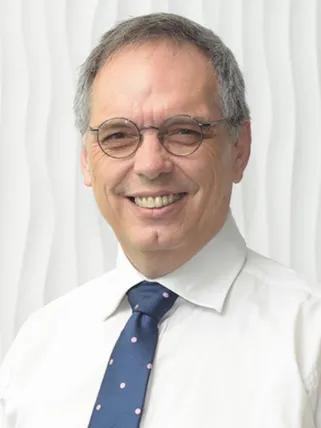
Professor David A. Bradley
Distinguished Research Professor
Applied Physics and Radiation Technologies Group, CCDCU
Sunway University
Professor Emeritus
Centre for Nuclear and Radiation Physics
Department of Physics, University of Surrey
Honorary Professor UCL
David Bradley PhD (USM), MSc (London), BSc (Essex), F.Inst P., FIPEM, Professor Emeritus University of Surrey, previously Head of the Centre for Applied Physics and Radiation Technologies at Sunway University. During his career, he has been Secretary of the International Radiation Physics Society (IRPS), up until the forthcoming ISRP16 meeting, is its Immediate Past-President, also for some years, Editor-in-Chief of the British Journal of Radiology (the oldest journal of radiology in the world) and the journals Applied Radiation and Isotopes and Radiation Physics and Chemistry. While his interest in the fundamentals of radiation interactions has not decreased, his work has increasingly turned towards applications in biomedical areas and industry, taking in the development of luminescence dosimeters; two companies have been born out of the latter (TrueInvivo in the UK and Lumisyns in Malaysia). Supervision of 35 PhD students has led to numerous collaborations, some 13000 citations and an h-index of 56.

Professor Ir Dr Hairul Azhar Abdul Rashid
Vice President,
Market Exploration, Engagement and Touchpoints (MEET)
Multimedia University, Cyberjaya
Professor,
Fiber Optics Research Center,
Faculty of Engineering,
Multimedia University, Cyberjaya
Hairul is a Professor at the Faculty of Engineering, focusing on specialty optical fiber devices and sensors. He obtained his PhD in Optical Communication Systems from Multimedia University (MMU) in 2007. He has since led a team of researchers, collaborating with Telekom Research and Development Sdn. Bhd. (TMR&D) focusing on designing and fabrication of specialty optical fiber for communications and sensors. His research team has cumulatively attracted grants close to RM9.9 million from PETRONAS, MOSTI, MOE and TM. His team is collaboratively working on doped optical fiber as Radiation Dosimeters. Resulting from these research endeavours, Hairul has published 156 peer-reviewed journals and 78 conference papers. He has filed 2 patents and granted 6 Industrial Designs (ID). The research team has collaborated extensively, both nationally and internationally, spanning across academia and industry.

Dr. Husaini Bin Salleh
President,
Malaysian Radiation Protection Association (MARPA)
Husaini Salleh currently holds several positions including:
• Director of Radiation Safety & Health Division
• Emergency Director for the SHE Committee
• Radiation Protection Officer for the Malaysian Nuclear Agency
• Medical Physics Consultant for the H Class License issued by the Ministry of Health Malaysia
• Chairman of Agensi Nuklear Malaysia AKRAB
• President of the Malaysian Radiation Protection Association (MARPA) for the 2022-2024 session
His contributions include:
• Consultation Services: Providing consultation on radiation protection and safety for both medical and non-medical sectors.
• Dosimetry and Metrology: Managing dosimetry and metrology operations in the Medical Physics Laboratory (MPL) and the Secondary Standard Dosimetry Laboratory (SSDL), both of which are accredited under MS ISO 17025.
• Lecturing and Speaking Engagements: He is a respected lecturer and speaker in the field of radiation protection and safety. His notable engagements include:
i. Lecturing for the IAEA-PGEC program, covering medical physics topics.
ii. Participated in the IAEA Expert Mission to Oman from October 6-10, 2019.
iii. Invited speaker at the ICORP 2022 in Geneva from September 5-9, 2022.
iv. Participated in the IAEA Expert Mission to Laos from May 15-19, 2023.
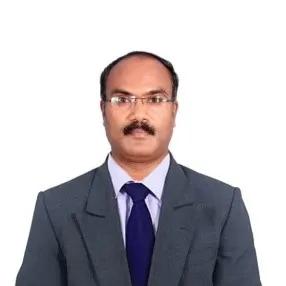
Dr A. Chandrasekaran
Dr. A. Chandrasekaran is working as an Assistant professor, in the Department of Physics at Sri Sivasubramaniya Nadar College of Engineering, Chennai. He has more than 15 years of teaching experience at the college level. He did a PhD in the field of Environmental Radiation & Molecular spectroscopy. He received the Best Lecturer Award for outstanding academic performance from 2012-2013 at the Global Institute of Engineering & Technology, Vellore Tamilnadu, and India. He is doing his research work in collaboration with the Indira Gandhi Centre for Atomic Research (IGCAR), Kalpakkam. He received the best paper award at the 19th National Symposium on Radiation Physics (NSRP-19), organized by the Indian Society for Radiation Physics in 2012, and the International Conference on Radiation Biology (ICRB-16), organized by the Center for Environmental Nuclear Research, SRM University, Chennai in 2016. To his credit, he has published more than 80 papers in National / International conferences and more than 120 papers in peer-reviewed journals. He delivered an invited talk at various conferences. Also, he presented a paper entitled “Radioactivity and Cancer Risk Assessment in Fourth Asian and Oceanic Congress on Radiation Protection, IRPA, Kuala Lumpur, Malaysia, 2014. Moreover, he received a Young Scientist award from Venus International Research Foundation, India, in the year of 2018. Also, he has received a Pearasiyar Kalimani Viruthu-2019 from Kaviyarsar Kalai Tamilsangam, Nammakal. He is also the author of an engineering physics book in Sci-tech and vedha publications, Tamil Nadu. He is a lifetime member of the Society for Radiation Research, India. Currently, one student has completed their PhD under him, and four are working under his guidance.
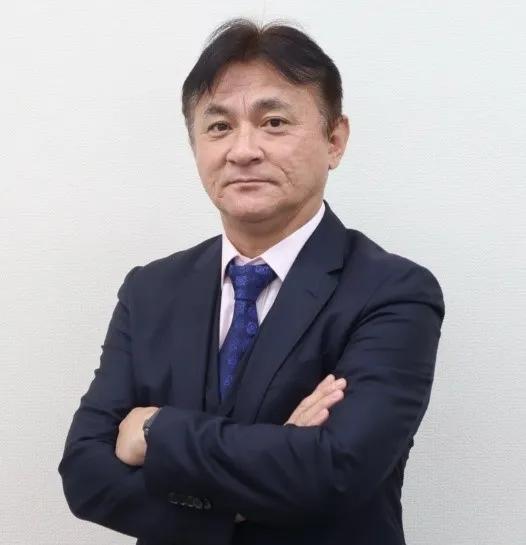
Professor Shinji Tokonami
Director
Institute of Radiation Emergency Medicine
Hirosaki University, Japan
Dr. Shinji Tokonami (Hirosaki University, Japan) is a full professor at Hirosaki University Institute of Radiation Emergency Medicine in the Department of Radiation Physics, where he specializes in radiation measurements and dose assessment. In 1995 Dr. Tokonami earned his Ph.D. in engineering from Waseda University. Throughout his career he has been involved with radiation research at Waseda University, the National Institute of Radiological Sciences, and Hirosaki University. In addition, he is a member of several International Organizations for Standards’ committees regarding radon and radiation measurements. He is a currently an executive director of Japan Health Physics Society. Dr. Tokonami also has developed multiple measurement techniques and equipment related to his field. In particular he developed a special algorithm for determining airborne radon decay products with continuous air sampling and established a passive measurement technique for determining two radon isotopes (radon-222 & -220) separately. Based on this measurement technique, the ISO 16641 has been issued as one of international standards. After the Fukushima nuclear accident, he is currently working on a quick and effective technique to measure radioactivity in the thyroid to determine the dose and quantify the radiological impact due to a nuclear accident.


